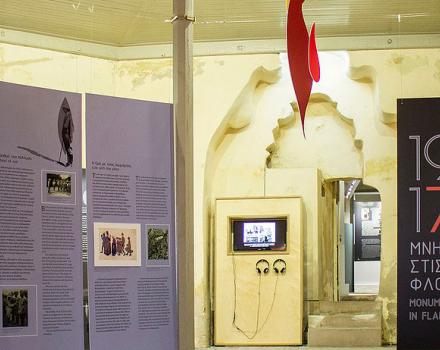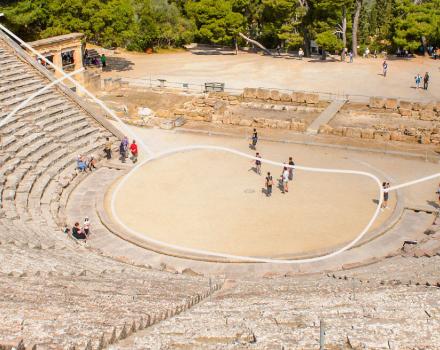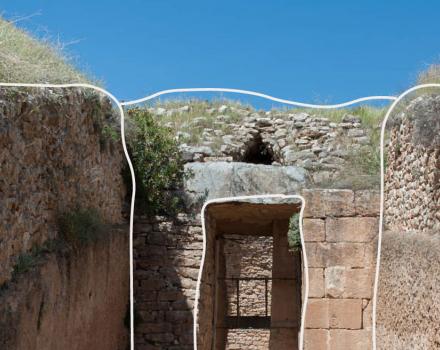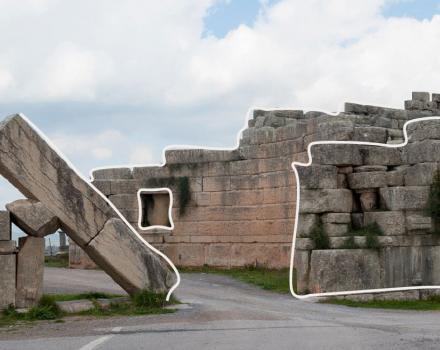If there is a little girl who turns the spotlight on herself as nobody else does, since 25 centuries of her death, that is undoubtedly Myrtis. The eleven years old Athenian girl who lived during the 5th c.B.C. and died from typhoid fever on the Plague devastated the one third of her compatriots, during the Peloponnesian war. That time she came in the limelight with the commemorative set of stamps – feuillet “Myrtis” with which the Hellenic Post Office inaugurated on February 15th the stamps issue plan of 2018.
We “met” Myrtis on 2010 at Acropolis Museum where her face reconstruction presented for the first time as thw result of the “Myrtis: Face to Face with the Past” program of the University of Athens. The same year, Myrtis was selected from the United States as a “friend of the UN Millennium Development Goals” related to the summit meeting of the United Nation hosted in New York about the Millennium Development Goals. The much translated appeal of Myrtis from the ancient Athens having the leaders of 150 Member states of the United Nation as addresees was to stop the death of children from completely foreseeable and curable illnesses.
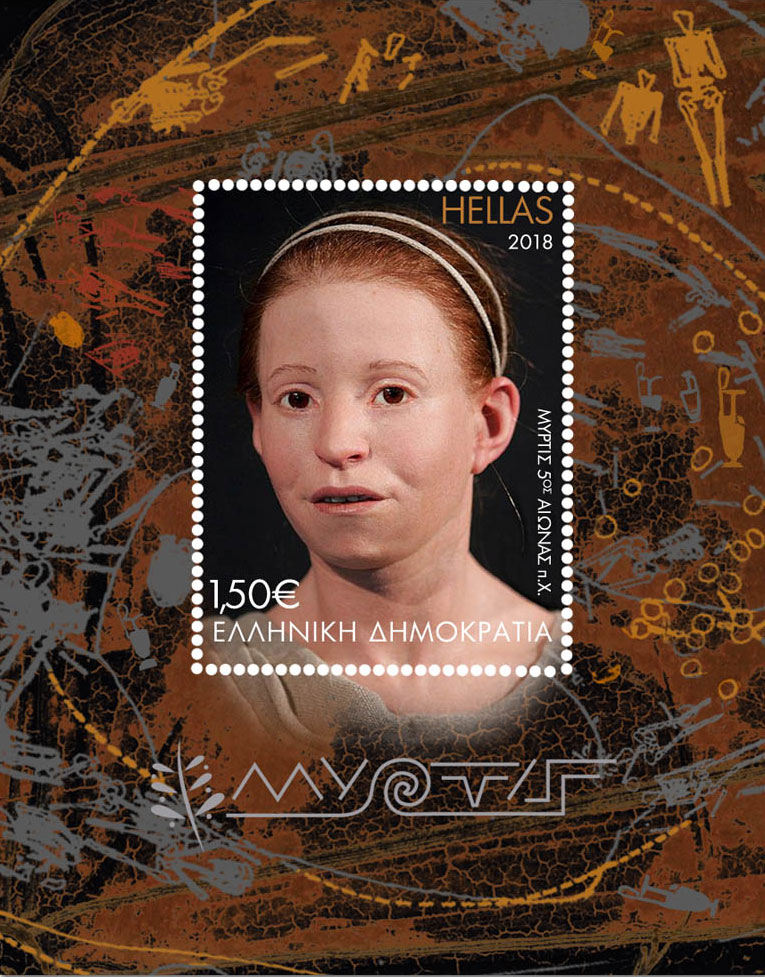
No excuse‘My death was inevitable. In the 5th century BC we had neither the knowledge nor the means to fight deadly diseases. But you, the people of the 21st century, you have no excuse. You have all the necessary means and resources to save the lives of millions of people and children who, like me, die from preventable and healable illnesses”. That concludes, among other things, Myrtis' message, in an effort made by the UN to raise awareness among the world's leaders about the fight against the diseases that lead to death every year nine million children under the age of five.
Let us remind you that the skeleton of little Myrtis had found in a mass burial of Kerameikos in 1995 during the extension of the metro network. “The cause of the Plague of Athens was been one of the greatest mysteries of the Medical History”, Manolis Papagrigorakis says, professor in Orthodontics faculty of the University of Athens and head of the team that did the reconstruction of Myrtis’ face. “The search for the pathogen factor caused the lethal disease led to the examination of the material derived from the internal cavity of intact teeth from the group tomb. The bacterium Salmonella enterica serovar Typhi (Salmonella typhoid) was identified, which is responsible for the occurrence of typhoid fever.
The idea of the reconstruction of a child’s head from the time of Pericles was born due to “The perfect condition of Myrtis’cranium. This is how an exact replica of the cranium was created and the reconstruction of the face of Myrtis was completed by using the ‘Manchester’ method”. The reconstruction was made with the initiative of mr.Papagrigorakis and with the collaboration of Greek, French and Swedish scientists of various specialties.
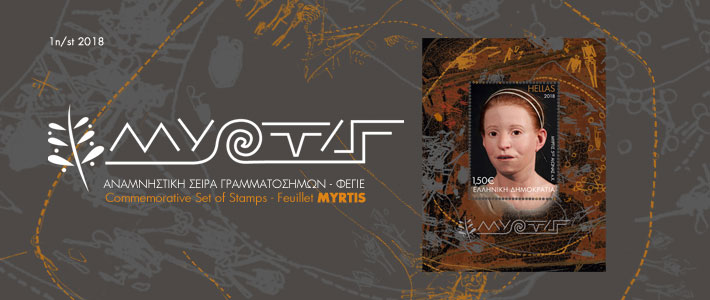
The issue of the Hellenic Post Office about Myrtis consists of one Feuillet of 70X90 mm, which includes one stamp of 35 X 45 mm, in designing - adaptation of Anthoula Lygka. All the 5.000 sets came out on the first day have a depiction related to the theme. Thus, Myrtis travels to the world and with her stamp, as she has been doing for years in various ways: with exhibitions, publications as well as with her personal website: http://www.myrtis.gr

